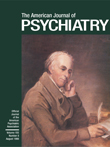TO THE EDITOR: We thank Dr. Licht for his comments. In our opinion, one of the defining characteristics of olanzapine, the improvement of negative symptoms, has been demonstrated in several double-blind, controlled clinical trials against either placebo (
1), haloperidol (
2,
3), or risperidone (
4). As pointed out by Meltzer (
5), improved patient outcomes—whether negative symptom treatment advantages are primary or secondary in nature—are of the utmost importance.
However, whether novel antipsychotics, such as olanzapine, are effective in a subgroup of primary negative symptoms is a question of significant academic interest (
6). Accordingly, in our recent publication, we employed the well-accepted statistical methodology of path analysis. In the article, we did not indicate that this method provided a final or definitive answer. However, the methodology does serve to advance the field in this area and generated reason to believe that olanzapine's negative symptom effects were above and beyond those attributable to superior efficacy in positive symptoms, associated mood symptoms, or extrapyramidal side effects (referred to as indirect).
Dr. Licht is incorrect in suggesting that the original study was designed “for evaluating the effect on positive symptoms.” Rather, the primary objective was the evaluation of the comparative effectiveness of olanzapine and haloperidol on symptoms as assessed by the Brief Psychiatric Rating Scale. This scale includes, but is not limited to, positive and negative signs and symptoms. It should have detected several of the clinical features mentioned in Dr. Licht's letter. A secondary prospective objective, as stated in the protocol, was the comparative efficacy of both compounds on negative symptoms. These data were presented in our manuscript. The overall path analysis was conducted on all randomly assigned patients participating in this very large, multinational, controlled clinical trial, not on “a subgroup of patients” as implied by Dr. Licht. The only post hoc stratification was according to predominant baseline negative signs and symptoms. This analysis only served to provide additional confirmation for the prospective treatment differences reported in the article. Determination of the extent that these data can be replicated in patients defined a priori as exhibiting a chronic deficit state is the logical progression of this research program. We trust that such results will be of interest to Dr. Licht and others in further evaluating this important question.
We would conclude that the reported path analysis illustrated the potential advantages of olanzapine in reducing the spectrum of potential neuroleptic side effects highlighted by Dr. Licht. In our study we also presented a comparison of haloperidol and placebo effects on negative symptoms. This illustrated that any other indirect factors, not accounted for in our path analysis, likely exerted a negligible effect. The most important observation, regardless of the debate as to whether the olanzapine treatment advantage on negative symptoms relates to direct and/or indirect mechanisms, is that patients experienced significantly greater negative symptom improvement with olanzapine. In light of the associated morbidity (
7), any benefit in negative symptom outcomes is welcomed.

